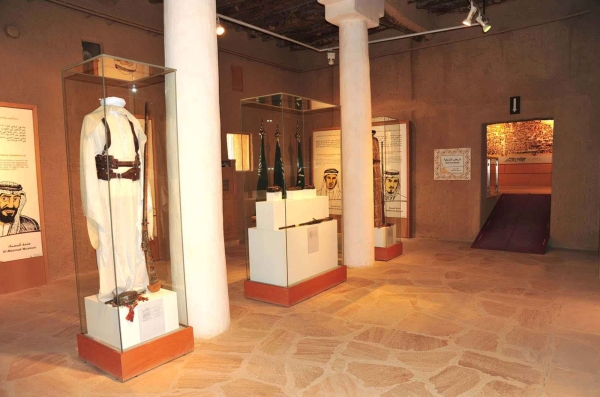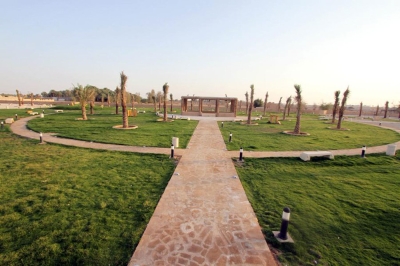
What Are the Contents of the Historical al-Masmak Palace Museum?

Al-Masmak Palace, with al-Masmak meaning a thick and fortified building, was constructed in 1865 during the reign of Imam Abdullah Bin Faisal Bin Turki. It was designed with high walls, lacking windows and openings except for two entrances and small openings for rifle barrels. One of the uses of this palace was as a storage facility for ammunition and weapons until it was decided to convert it into a historical landmark and later into a museum in 1995.
The palace contains: the main wooden gate measuring 3.60 m in height, 2.65 m in width, and ten cm in thickness. It has three beams, each with a thickness of about twenty-five cm, separated by a narrow opening called 'al-Khawkha.' To the left of the gate is 'the mosque' with its adobe columns, multiple shelves for Qurans on its walls, plastered Mihrab, and ventilation openings.
At the western entrance lies 'al-Diwaniya,' a rectangular room with a corner designated as al-Wajar, 'coffee preparation place'. In the middle of the palace's courtyard stands a well from which water is drawn using a pulley system mounted at the top of the well and attached to a bucket. Al-Masmak has four conical towers, each reaching a height of fourteen m, with a central tower called 'al-Murabba,' measuring eighteen m long, overlooking the palace from its balcony.
The palace includes seventeen halls, narrating the history of al-Masmak courtyard, the time of Riyadh's recovery, the old Riyadh, al-Masmak and its uses, the final hall, the courtyard of the well, temporary exhibitions, as well as the story of the unification of the Kingdom of Saudi Arabia and the achievements of the founder King Abdulaziz Bin Abdulrahman Al Saud, supplemented with photographs, maps, models, and explanatory films.
The museum exhibits a collection of weaponry, including swords, spears, daggers, and rifles, in addition to military and Bedouin attire.
Related quizzes
Related articles
